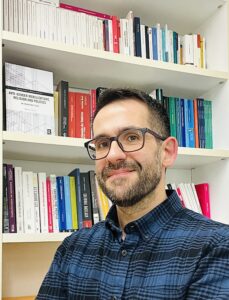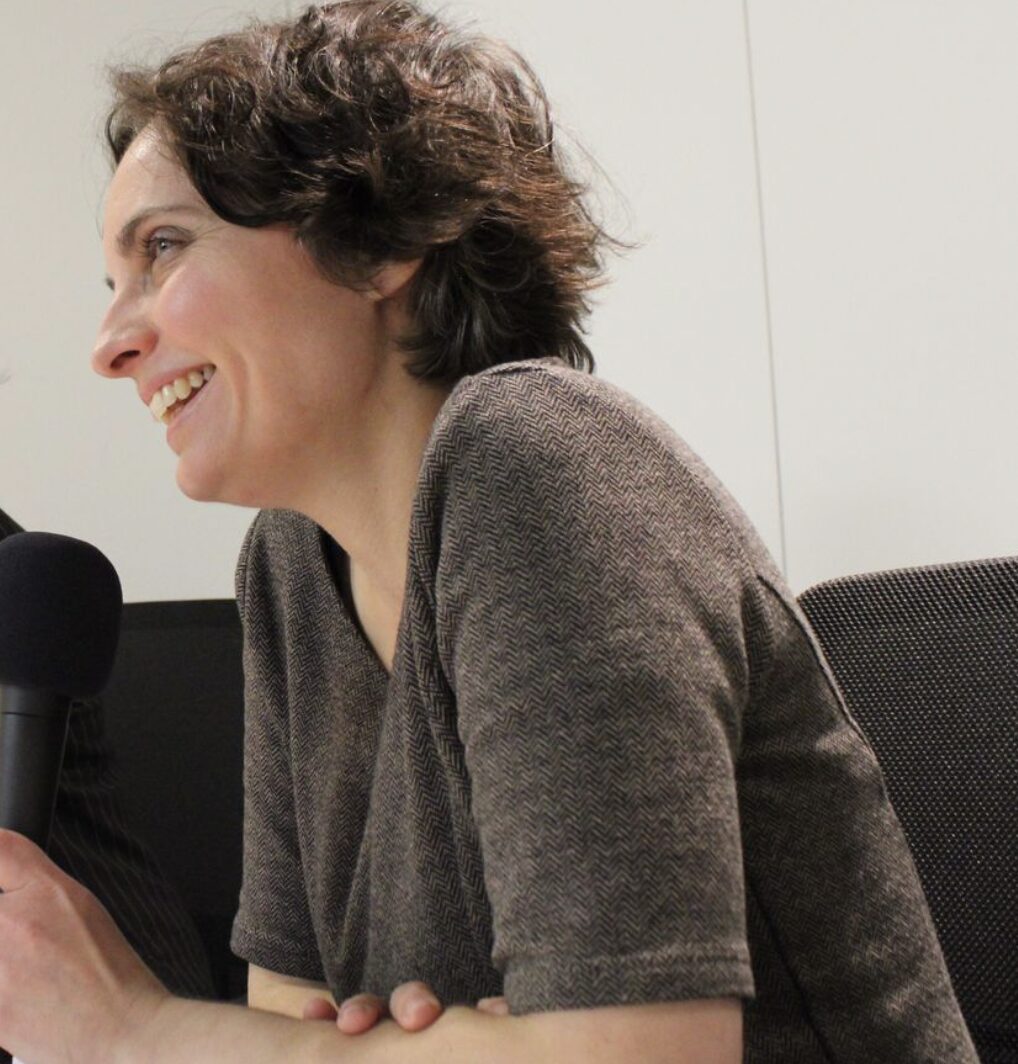Understanding Italy’s Anti-Gender Movement: An Interview with Prof. Massimo Prearo
 In a interview with Forbidden Colours’ Séverine De Bruyn, the Italian political scientist Massimo Prearo delves into the intricate details of his book ‘Anti-Gender Mobilizations, Religion and Politics, an Italian Case Study’. The conversation sheds light on the trajectory of this movement, the connections with radical right political parties, the Catholic Church, and some reflections about countering the narrative of the anti-gender movement.
In a interview with Forbidden Colours’ Séverine De Bruyn, the Italian political scientist Massimo Prearo delves into the intricate details of his book ‘Anti-Gender Mobilizations, Religion and Politics, an Italian Case Study’. The conversation sheds light on the trajectory of this movement, the connections with radical right political parties, the Catholic Church, and some reflections about countering the narrative of the anti-gender movement.
Target Audience for the Book
When asked about the intended readership, Massimo Prearo emphasized that the book is primarily aimed at an academic audience. “The book was intended to be read by researchers because it is a result of my research. It serves as a dialogue with colleagues across Europe who are investigating similar topics, including the anti-gender movement, links with far-right and radical right parties, and democratic backsliding. The book is a crucial resource for those examining the contentious politics surrounding gender, family, sexuality, and gender identity.”
The book also targets students at various levels, particularly PhD candidates, but it is also accessible to other students. “We see at the university that there is an interest in this topic because people, especially in Italy, experience the effects of anti-gender campaigns and mobilizations,” Massimo Prearo explained. “Students observe and experience the attacks on LGBTIQ+ rights, trans people, and so on. This motivates them to understand underlying reasons and governmental policies. The book offers conceptual tools to aid their research, especially when conducting observations on or even ethnography within conservative or ultra-conservative religious movements.”
Additionally, the book is addressed to politicians, policymakers, activists, and organizations involved in policymaking or political processes. “My book is one of the instruments to better understand the anti-gender movement and the nature of their claims.”
Trajectory of the anti-gender movement
Discussing the history of the anti-gender movement, Massimo Prearo pointed out that Italy is an interesting case study because we can clearly trace and identify the steps taken by this movement. Its earliest activities were in 2012-2013 with the first public appearances. At this time, the anti-gender movement mobilized to recruit local-level militants from Catholic groups (primarily parishes) and develop a network of actors from pro-life activism. The anti-gender movement really took off from then.
The second milestone in this trajectory began with the demonstration called “Family Day” in June 2015, which led to the establishment of the “Let’s Defend Our Children” (Difendiamo I Nostri Figli) committee. From this moment onwards we can speak of a real organization with a stable structure and a legitimate spokesperson, Massimo Gandolfini. He went on to become the most important figure of the organization Family Day, but also a representative of the anti-gender movement.
By then, the anti-gender movement did not just limit itself to local actions any longer, as it started protesting more and more in the open against several legislative initiatives about homophobia and transphobia (Scalfarotto); registered partnerships for same-sex couples (Cirinnà); gender education (Fedeli). The anti-gender movement succeeded in presenting itself as the voice of the people, who are allegedly not heard by politicians and concerned about issues related to family, gender, sexuality, life and death.
After the second national demonstration “Family Day” in 2016, a split in the anti-gender movement emerged. Mario Adinolfi and Gianfranco Amato, two key figures of Family Day, decided to found a political party, the People of the Family party (Il Popolo della Famiglia). This action tells us that there were two conflicting strategies regarding the idea of a political project held by leaders of the anti-gender movement. Adinolfi and Amato wanted to achieve this by establishing a political party (in the contemporary lack of large Catholic parties in Italy), whereas Gandolfini wanted to influence political decision-making through a movement that “embodies the will of the people”.
The disappointing results of the two elections in 2016 and 2017 showed that the attempt to introduce a new Catholic political party in Italy failed. The strategy of the anti-gender movement to forge political alliances through collaborations on issues that concern them, such as protecting the traditional family, proved to be more successful. This strategy resulted in new networks that expanded the influence of the anti-gender movement from the local to the national level. Indeed, radical right parties, such as Giorgia Meloni’s party Fratelli d’Italia, adopted the agenda of the anti-gender movement. As a result, the anti-gender movement gained a central position in the Italian public scene.
After the general elections of 2018 it became clear that those parties were among the most rewarded by the electorate. The key points of their programs included the fight against “gender ideology”, the “demographic winter”, the defense of life (no abortion, no euthanasia), the promotion of the natural family, and the educational primacy of parents.
The Relationship Between Political Parties and the Anti-Gender Movement
Exploring the relationship between Italian radical right parties like Fratelli d’Italia and Lega with the anti-gender movement, Massimo Prearo described a complex, differentiated, and intriguing dynamic. On the one hand, Fratelli d’Italia is very close to the anti-gender movement and has an ideological affinity with this movement. On the other, Lega works from a more opportunistic angle. They use the key points from the anti-gender movement to enhance, reinforce, and perform a kind of contentious discourse against élites such as the institutions, ruling political parties, and Europe. This strategy fits into a broader populist framework. In this context, we must not forget that Lega was part of the government in 2018. Later, we saw a reversal of roles: Fratelli d’Italia took over the dominant position from Lega. They not only became the ruling party in the government but also positioned themselves very cooperatively towards the anti-gender movement.
Massimo Prearo observed the following: “In the past we had Pro Vita & Famiglia (Pro Vita), which is a specialized conservative organization that claims the defense of life from natural conception to natural death. But this was not a movement. And this is the key point. The anti-gender movement established itself as a movement in the public space, namely as the conservative social movement. They put pressure, demonstrate, interact, have exchanges and discussions with political parties. Their claim is that they are the representative of the conservative people in Italy. Being ideologically in line with the anti-gender movement is fruitful for Fratelli d’Italia, because now they can say that they have a direct connection with the conservative social movement, with the people, and with civil society organizations. They work with them to implement their claims and eventually turn those claims into public policies, positioning themselves as true representatives of conservative values.”
The Role of Catholicism and Neo-Catholicism
Addressing the movement’s relationship with Catholicism, Massimo Prearo clarified that this relationship exists on three levels. Firstly, all anti-gender activists are Catholic. Many of them come from pro-life activism, which was and is a form Catholic activism in Italy. The second level is that the founders of the anti-gender movement belong to the Neocatechumenal Way, which is an officially recognized movement within the Catholic Church. The third level of relationship with Catholicism is described by Massimo Prearo as an “extra-Catholic attitude” of the anti-gender movement.
“They do not perform an identity of their movement as a religious one. The anti-gender movement has chosen another strategy. They state to be mobilized as citizens who are concerned with the changes that are happening in the world, related to family, gender, sexuality, life and death. Of course, they are Catholics, but they go beyond this ground to perform a sort of political identity in the public arena. They mobilize arguments coming from biology, philosophy, sociology, anthropology, and so on. It’s part of their objective not to be relegated to a Catholic position. For this reason, I define their activism as extra-Catholic.”
Continuing on this point, Massimo Prearo describes the members of the anti-gender movement as neo-Catholics. In his research he found that the available concepts to describe anti-gender activists, like traditionalist, ultra-Catholics, or radical-Catholics were insufficient. “The concept of neo-Catholic people, in my view, allows us to think about the project of the anti-gender movement as a political project that is intended to introduce again Catholic collective action in the public and political arena – but in a different way, that’s why I call them ‘neo’. So, the anti-gender movement allows the Church to stay on the level of the principle, of ‘showing the way’, while they do the work in the public sphere with the political parties.”
Until the nineties, Italy had one Catholic political party (Democrazia Cristiana) which functions, so to say, as the political instrument of the Catholic Church. Since Italy doesn’t have a significant unified Catholic political party anymore, the anti-gender movement has become the ideal partner for the Church to fulfill its political project, transcending traditional Catholic activism.
Reflections about Countering the Anti-Gender Movement
Finally, Massimo Prearo offered insights for progressive politicians and parties on how to possibly counter the anti-gender movement. He states that whilst his book does not offer direct solutions or recommendations, it provides reflections that could help conceive possible responses or strategies to counter anti-gender campaigns.
Massimo Prearo emphasized the importance of recognizing the anti-gender movement as a legitimate political project rather than dismissing it as a mere conspiracy. “This is not the belief in something that doesn’t exist, but a political project to counter the progressive and democratic idea of building a better world,” he asserted.
Massimo Prearo also urged progressive parties to collaborate more closely with feminist and LGBTIQ+ movements, particularly to integrate their knowledge and technical expertise into political programs. He gives the example of puberty blockers for trans minors, for which it is crucial that politicians have the right technical knowledge. Possessing this type of technical expertise would make politicians much more capable of defending the right to puberty blockers. As Massimo Prearo said: “It is not enough to defend rights, because claiming that LGBTIQ+ rights are human rights could be a merely abstract claim. Here, we are talking about very specific and technical declinations of rights.”

Séverine De Bruyn
Advocate
Séverine De Bruyn is an advocate at Forbidden Colours focussing on the situation of queer women and Southern Europe. She graduated as a psychologist and works as a senior policy officer.